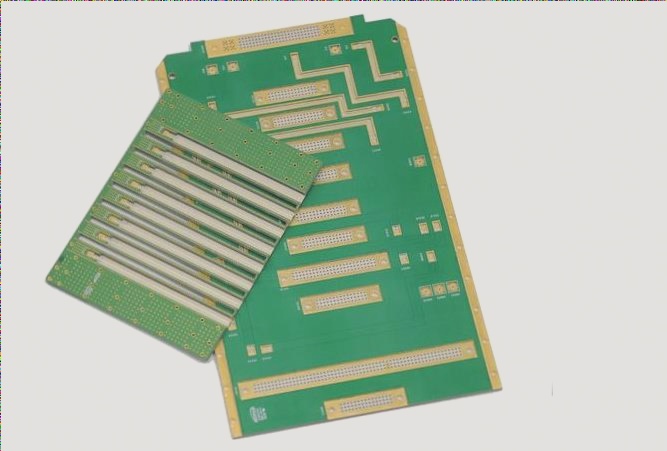1. The FPC soft board process includes exposure, PI etching, opening, electrical testing, punching, appearance inspection, and performance testing, among others.
2. The production process of the FPC soft board directly impacts its performance. Upon completion, rigorous testing is required to identify any unqualified FPCs, ensuring optimal performance in application.
3. During the FPC soft board testing, a high-current shrapnel micro-needle module is employed, providing conduction and connection capabilities to guarantee the stability and efficiency of the test.
4. In the FPC soft board process, exposure involves transferring the circuit pattern to the board using dry film technology, typically through a photosensitive method.
5. Once exposure is finished, the FPC soft board circuit is essentially formed. The dry film not only transfers the image but also protects the circuit during the etching process.

1. PI etching involves spraying an etching solution evenly onto the copper foil surface through a nozzle under specific temperature conditions, leading to an oxidation-reduction reaction with the copper, ultimately forming the circuit after film removal. The purpose of this process is to create the original conductor line and interconnection lines between layers. It is commonly used for conductive connections in double-layer FPCs.
2. Beyond the service life, reliability, and environmental performance of FPC soft boards, performance testing also encompasses folding resistance, flex resistance, heat resistance, solvent resistance, solderability, and peeling performance.
3. The folding and flex resistance of FPC soft boards are influenced by the copper foil’s material and thickness, the type and thickness of the adhesive used for the substrate, and the insulating base material’s characteristics. During assembly, double-layer and multilayer FPC copper foils exhibit good symmetry when pressed together, enhancing bending resistance.
4. Performance testing of FPC soft boards necessitates professional equipment. The high-current shrapnel microneedle module offers stable conduction. Its integrated shrapnel design features high overall accuracy and excellent electrical conductivity. It can transmit current ranging from 1-50A, maintaining constant voltage and reliable performance without current attenuation. In small pitch scenarios, it accommodates pitch values between 0.15mm and 0.4mm, ensuring stable connections without pin stickiness, boasting superior performance and longevity.
5. For FPC soft board testing, high-current shrapnel microneedle modules provide a dependable choice in both performance and cost-effectiveness, with unique advantages that ensure test stability and longevity. This solution enhances the testing efficiency of FPC soft boards while safeguarding their quality.
2. The production process of the FPC soft board directly impacts its performance. Upon completion, rigorous testing is required to identify any unqualified FPCs, ensuring optimal performance in application.
3. During the FPC soft board testing, a high-current shrapnel micro-needle module is employed, providing conduction and connection capabilities to guarantee the stability and efficiency of the test.
4. In the FPC soft board process, exposure involves transferring the circuit pattern to the board using dry film technology, typically through a photosensitive method.
5. Once exposure is finished, the FPC soft board circuit is essentially formed. The dry film not only transfers the image but also protects the circuit during the etching process.

1. PI etching involves spraying an etching solution evenly onto the copper foil surface through a nozzle under specific temperature conditions, leading to an oxidation-reduction reaction with the copper, ultimately forming the circuit after film removal. The purpose of this process is to create the original conductor line and interconnection lines between layers. It is commonly used for conductive connections in double-layer FPCs.
2. Beyond the service life, reliability, and environmental performance of FPC soft boards, performance testing also encompasses folding resistance, flex resistance, heat resistance, solvent resistance, solderability, and peeling performance.
3. The folding and flex resistance of FPC soft boards are influenced by the copper foil’s material and thickness, the type and thickness of the adhesive used for the substrate, and the insulating base material’s characteristics. During assembly, double-layer and multilayer FPC copper foils exhibit good symmetry when pressed together, enhancing bending resistance.
4. Performance testing of FPC soft boards necessitates professional equipment. The high-current shrapnel microneedle module offers stable conduction. Its integrated shrapnel design features high overall accuracy and excellent electrical conductivity. It can transmit current ranging from 1-50A, maintaining constant voltage and reliable performance without current attenuation. In small pitch scenarios, it accommodates pitch values between 0.15mm and 0.4mm, ensuring stable connections without pin stickiness, boasting superior performance and longevity.
5. For FPC soft board testing, high-current shrapnel microneedle modules provide a dependable choice in both performance and cost-effectiveness, with unique advantages that ensure test stability and longevity. This solution enhances the testing efficiency of FPC soft boards while safeguarding their quality.


